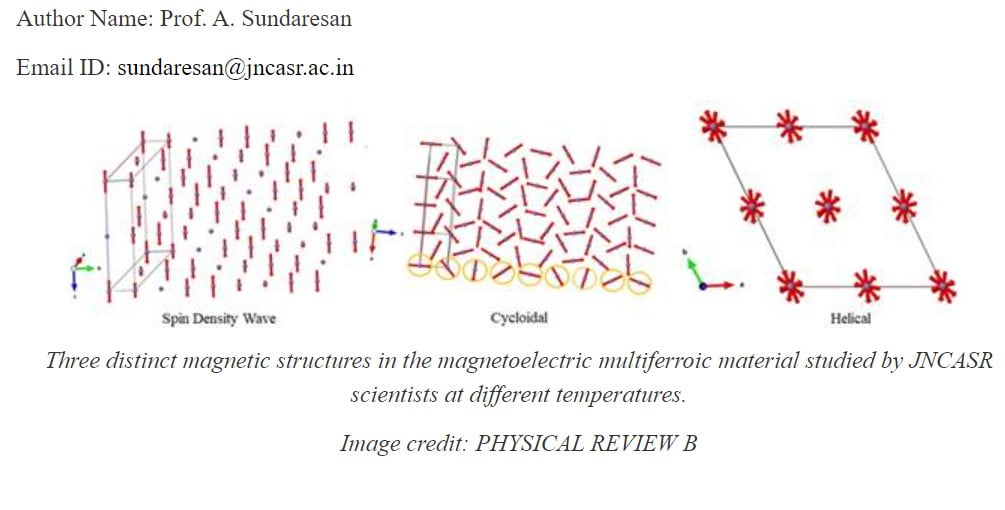16th Feb: Researchers at Jawaharlal Nehru Centre for Advanced Scientific Research (JNCASR) have identified a unique mechanism for electric polarization via magnetic ordering in the novel mineral MnBi₂S₄.
This discovery, a significant breakthrough for the field of magnetoelectric materials, was published in the journal PHYSICAL REVIEW B, could revolutionize energy-efficient data storage and other electronic components
Professor A. Sundaresan, Chair of the Chemistry & Physics of Materials Unit at JNCASR, led the study, which focused on MnBi₂S₄, also known as mineral graţianite, a member of the ternary manganese chalcogenide family. High-resolution neutron diffraction revealed distinct magnetic structures in the material, including spin density waves, cycloidal, and helical spin structures. Importantly, these last two spin structures induced ferroelectricity in the material
At 27 Kelvin, the researchers observed a spin density wave structure, which did not break inversion symmetry nor induce polarization. However, as the temperature decreased to 23 Kelvin, a magnetic transition occurred, resulting in a cycloidal spin structure that broke inversion symmetry and induced polarization. Further cooling to 21.5 Kelvin led to a helical structure, also breaking inversion symmetry and inducing polarization
MnBi₂S₄ has potential for energy-efficient data storage

This discovery is particularly important as it has never been reported in the specific MnBi₂S₄ material before. The findings could find applicability in the domain of energy-efficient data storage, as the material may exhibit the same phenomena at room temperature, enabling energy-efficient manipulation of spin using small electric fields. This, in turn, could revolutionize data storage by reducing energy consumption during writing processes
Additionally, these findings can be helpful for the development of four-state logic memory systems, providing additional degrees of freedom for device performance compared to the current binary logic systems. Going ahead, however, the researchers express the need for further exploration of different materials and structures to understand the mechanisms that break inversion symmetry and induce polarization, with the goal of finding materials that exhibit
For this research, Sheikh Saqr Laboratory and International Centre for Materials Science at JNCASR provided experimental facilities, and DST, SERB, and the Government of India provided financial support. The Science and Technology Facility Council (STFC UK) provided neutron beam time



